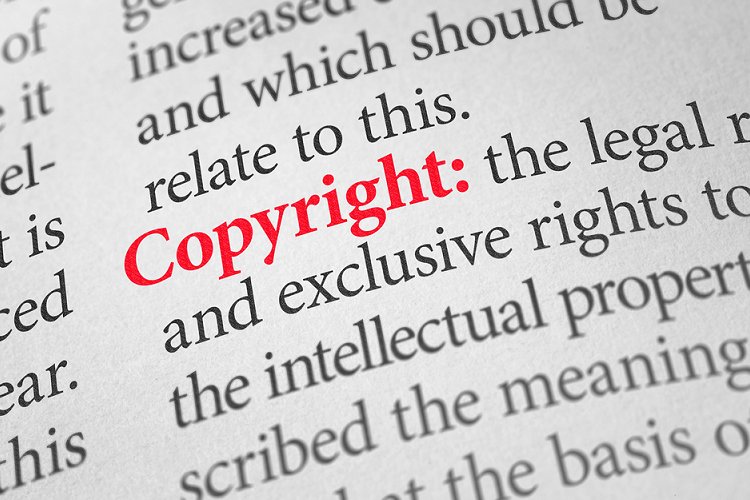What’s the Difference Between Copyright and Trade Marks?

Copyright and trade marks are different forms of legal protection for intellectual property and copyright protects original works of authorship. Copyright includes things like literary works, artistic works, musical works and also sound recordings, cinematograph films and so on. The copyright in these works can’t be registered in Australia. It simply arises automatically upon the creation of the work. So, for example, if I write a poem and I put my name on it and the date on it, copyright automatically in place from that point in time. And as the author, prima facie, I’m the owner of the copyright in that poem.
Trade marks are a form of legal protection that protect signs that are used in trade and commerce to distinguish one traders goods or services from the goods or services of another trader. Signs used in this manner can be all different kinds of things. They could be words like Microsoft is a word mark, an example of a logo that functions as a trade mark would be the McDonald’s golden arches. Then there are non-traditional signs that can function as trademarks. And examples might be the shape of the Coca-Cola contour bottle or another example might be a sound mark, an example of that is the MGM lion roar that you sometimes hear when you go to the movies.
It can be all sorts of weird and wonderful signs that can function as trade marks, but by and large, the majority of trade marks are words and logos, those would be the ones that most people are familiar with.
Why Do Copyright and Trade Marks Often Get Confused With One Another?
The subject matter that is protected by those different forms of IP protection can overlap, which might lead to some confusion. An example of that would be a logo. A logo that is also an artistic work could be protected, automatically, as copyright work but is also eligible to be protected as a trade mark.
When considering artistic works it really depends on the purpose of the work as to whether it would also constitute a trade mark. If it’s purely an artistic work that has been created to be enjoyed as an artistic work and nothing else (such as a painting to hang on the wall), then copyright would be the appropriate form of protection. However, if it’s being used in commerce to designate the goods of a trader, then it would also be a trade mark and should be registered as a trade mark to protect it. Copyright has a maximum lifespan for protection, however, trade marks can be owned indefinitely if they have been in use for a very long time and they continue to function as trade marks just as much today as they did a hundred years ago.
Can You Register a Trade Mark for a Distinctive Personality Trait or Known Characteristic?
Sometimes people use the term trade mark in almost a cultural sense when they talk about somebody’s trademark smile, or their trade mark sparkly glove, for example. Although in recent times you may see some celebrities trying to register trade marks of gestures or items of clothing that they’re associated with or something like that they’re associated with it’s not hugely common and perhaps less common for those trade marks to be found registrable.
It’s more of a colloquialization of the term trade mark when used to speak about a person’s style, gestures or the like.
As touched on, an example of where there’s a subject matter of artistic work that could qualify for protection as copyright as well as in trade mark is probably a logo, like the Starbucks logo where it’s a lady that has a crown and she’s quite ornate. That would likely qualify to be sufficiently original and artistic for copyright protection. And, obviously it’s also used as a trade mark for that well known franchise of coffee stores. So, you can see how it has that dual protection.
Where this ‘dual protection’ can be useful for the owner of the intellectual property is where they want to restrict its use in context where it’s not being used as a trade mark. Typically speaking a trade mark registration is only infringed if the other person uses that sign as a trade mark (e.g. to distinguish their goods/services from others).
Say a third party just wants to take the Starbucks logo and put it on a T-shirt, but they’re not using it as a trade mark. They’re just using it because they liked the design. Starbucks could, if they own the copyright, could seek to stop that use as it would then be a copyright infringement, even if it is not trade mark infringement. They could possibly seek to stop that use by relying on other forms of legal rights like rights under consumer law legislation by saying it would be misleading in Australia, but copyright is quite a simple form of intellectual property to protect.
Basically as soon as somebody has copied it, assuming it’s clear that they have copied it and they haven’t just come up with exactly the same work by their own means, then it’s fairly straightforward to show that there’s been an infringement because it’s just been copied. Whereas if you want to show infringement of a trade mark, you have to show that the person who is using the trade mark is using it as a trademark as opposed to just copying it and putting it on something.
How Do I Register My Copyright?
We don’t register copyrights in Australia. The copyright exists simply by virtue of the creation of the subject matter, whether that be an artistic work or a literary work or some other subject matter. When the author creates it, they automatically have rights in it. If you have commissioned someone to create the work for you (for example, a graphic designer commissioned to design a logo for you), it’s important to review the contract to determine whether the copyright ownership has transferred to you, or remains with the creator.
Enforcing copyright requires some steps. So, if you want to licence somebody else to use your work, whether that be to perform a song that you’ve written for example, then need a licence agreement and trade mark attorneys and IP lawyers can assist in preparing those sorts of licencing arrangements.
There are some countries where there is a copyright register but not here. You do not necessarily have to register your copyright to claim ownership, however, some countries may require you to put your work on the register in order to take steps against infringement.
Trade marks, on the other hand, you can formally register and we always recommend that people do register trade marks to ensure a clear proof of ownership in that trade mark.
How Long Does My Copyright or Trade Mark Last?
The duration of copyright protection is finite and it really does depend on the kind of subject matter. In Australia, for example, an artistic work or a literary work, the duration of protection is the life of the author plus 70 years.
Whereas trade marks, you’d register them in 10 year instalments. You can register your trade mark for 10 years initially in Australia and then at the end of the 10 years you can renew it and you can keep doing that at the end of every 10 years if you choose to do so, assuming your trade mark isn’t challenged by a third party.

